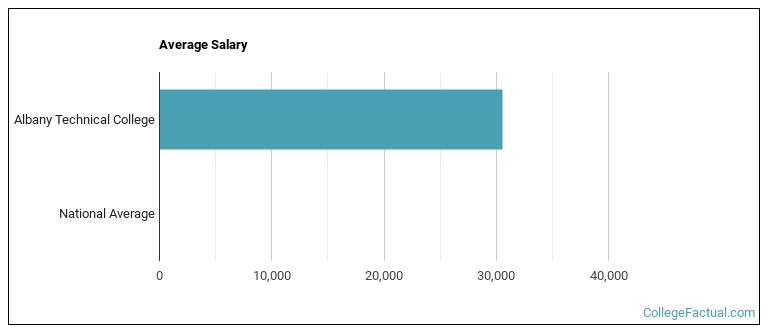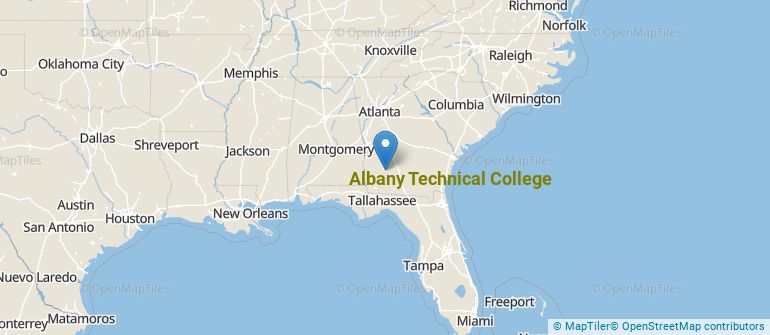 by our College Data Analytics Team
by our College Data Analytics Team
College Factual recognizes the best colleges and universities in its annual rankings. These rankings include categories for best overall colleges, best colleges for each major, best value schools, and much more.
Albany Technical College was awarded 17 badges in the 2025 rankings. The highest ranked major at the school is business, management & marketing.
Explore the best ranked schools for the programs you are most interested in.
Albany Technical College landed the #1,068 spot in College Factual's 2025 ranking of best overall colleges in the United States. The higher ed experts analyzed 2,152 colleges and universities across the nation to determine this ranking. This is an improvement over the previous year, when Albany Technical College held the #1,321 spot on the Best Overall Colleges list.
Albany Technical College also holds the #30 spot on the Best Colleges in Georgia ranking.
Albany Technical College has an open admissions policy, so you should not have much trouble being accepted by the school. Still, it is important to fill out the application completely and submit any requested materials, which may include proof that you have a high school diploma or the equivalent.
The student to faculty ratio at Albany Technical College is an impressive 12 to 1. That's quite good when you compare it to the national average of 15 to 1. This is a good sign that students at the school will have more opportunities for one-on-one interactions with their professors.
In addition to the student to faculty ratio, some people look at what percentage of faculty members are full-time as a sign of how much time professors will be able to spend with their students. This is because part-time teachers may not be be on campus as much as their full-time counterparts.
The full-time faculty percentage at Albany Technical College is 33%. This is lower than the national average of 47%.
The freshmen retention rate is a sign of how many full-time students like a college or university well enough to come back for their sophomore year. At Albany Technical College this rate is 52%, which is a bit lower than the national average of 68%.
During the 2017-2018 academic year, there were 3,022 undergraduates at Albany Technical College with 1,131 being full-time and 1,891 being part-time.
The net price is calculated by adding tuition, room, board and other costs and subtracting financial aid.Note that the net price is typically less than the published for a school. For more information on the sticker price of Albany Technical College, see our tuition and fees and room and board pages.
Almost 66% of college students who graduated with the class of 2018 took out student loans, but that percentage varies from school to school. At Albany Technical College, approximately 2% of students took out student loans averaging $3,000 a year. That adds up to $12,000 over four years for those students.

See which majors at Albany Technical College make the most money.
Get more details about the location of Albany Technical College.

Contact details for Albany Technical College are given below.
| Contact Details | |
|---|---|
| Address: | 1704 South Slappey Boulevard, Albany, GA 31701 |
| Phone: | 229-430-3500 |
| Website: | www.albanytech.edu/ |
| Most Popular Majors | Bachelor’s Degrees | Average Salary of Graduates |
|---|---|---|
| Business Administration & Management | 212 | NA |
| Health & Medical Administrative Services | 135 | NA |
| Cosmetology | 126 | NA |
| Ground Transportation | 109 | NA |
| Criminal Justice & Corrections | 97 | NA |
| Human Development & Family Studies | 72 | NA |
| Vehicle Maintenance & Repair | 71 | NA |
| Practical Nursing & Nursing Assistants | 67 | NA |
| Teacher Education Grade Specific | 52 | NA |
| Allied Health Professions | 50 | NA |
Online learning options are becoming more and more popular at American colleges and universities. Online classes are great for students who have busy schedules or for those who just want to study on their own time.
In 2022-2023, 2,078 students took at least one online class at Albany Technical College. This is an increase from the 1,979 students who took online classes the previous year.
| Year | Took at Least One Online Class | Took All Classes Online |
|---|---|---|
| 2022-2023 | 2,078 | 1,440 |
| 2021-2022 | 1,979 | 1,612 |
| 2020-2021 | 2,592 | 2,262 |
| 2018-2019 | 2,149 | 1,239 |
Learn more about online learning at Albany Technical College.
Footnotes
*The racial-ethnic minorities count is calculated by taking the total number of students and subtracting white students, international students, and students whose race/ethnicity was unknown. This number is then divided by the total number of students at the school to obtain the racial-ethnic minorities percentage.
References
More about our data sources and methodologies.